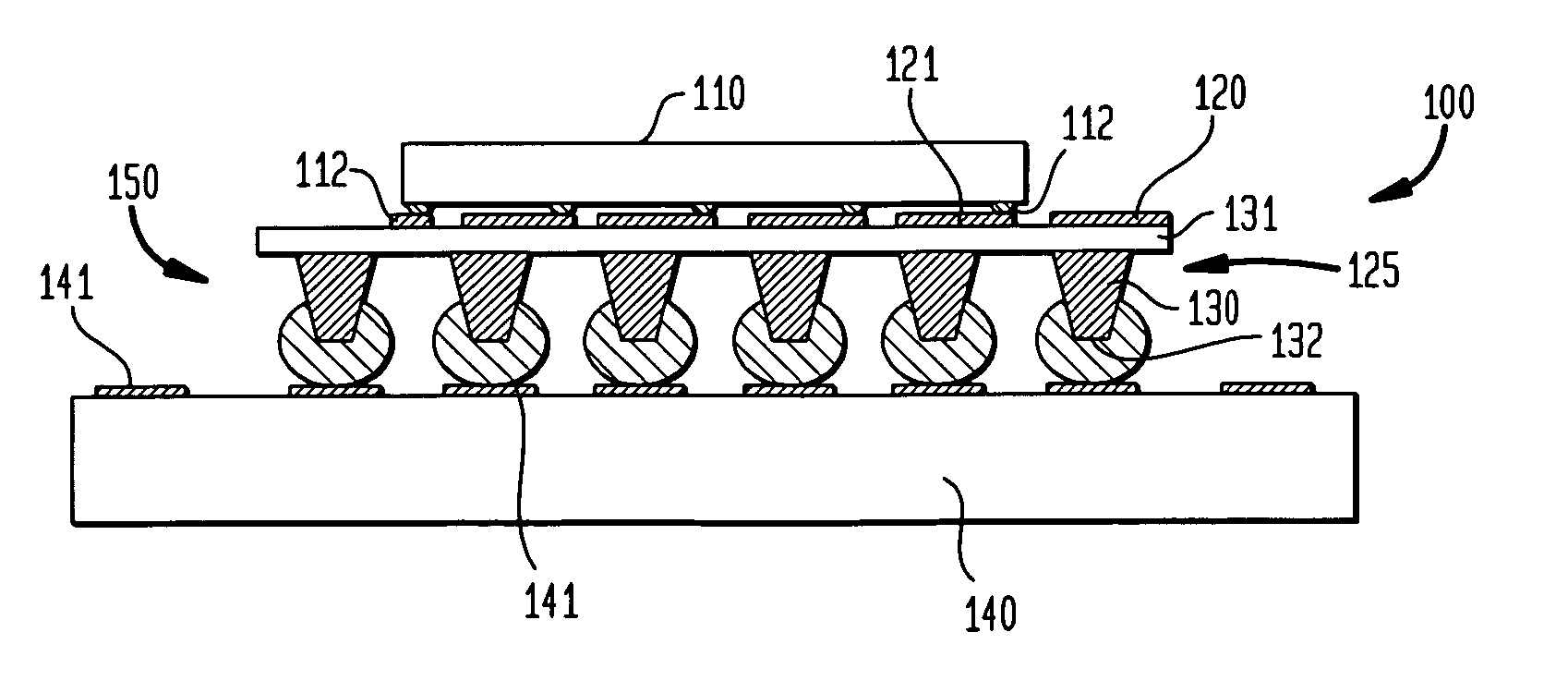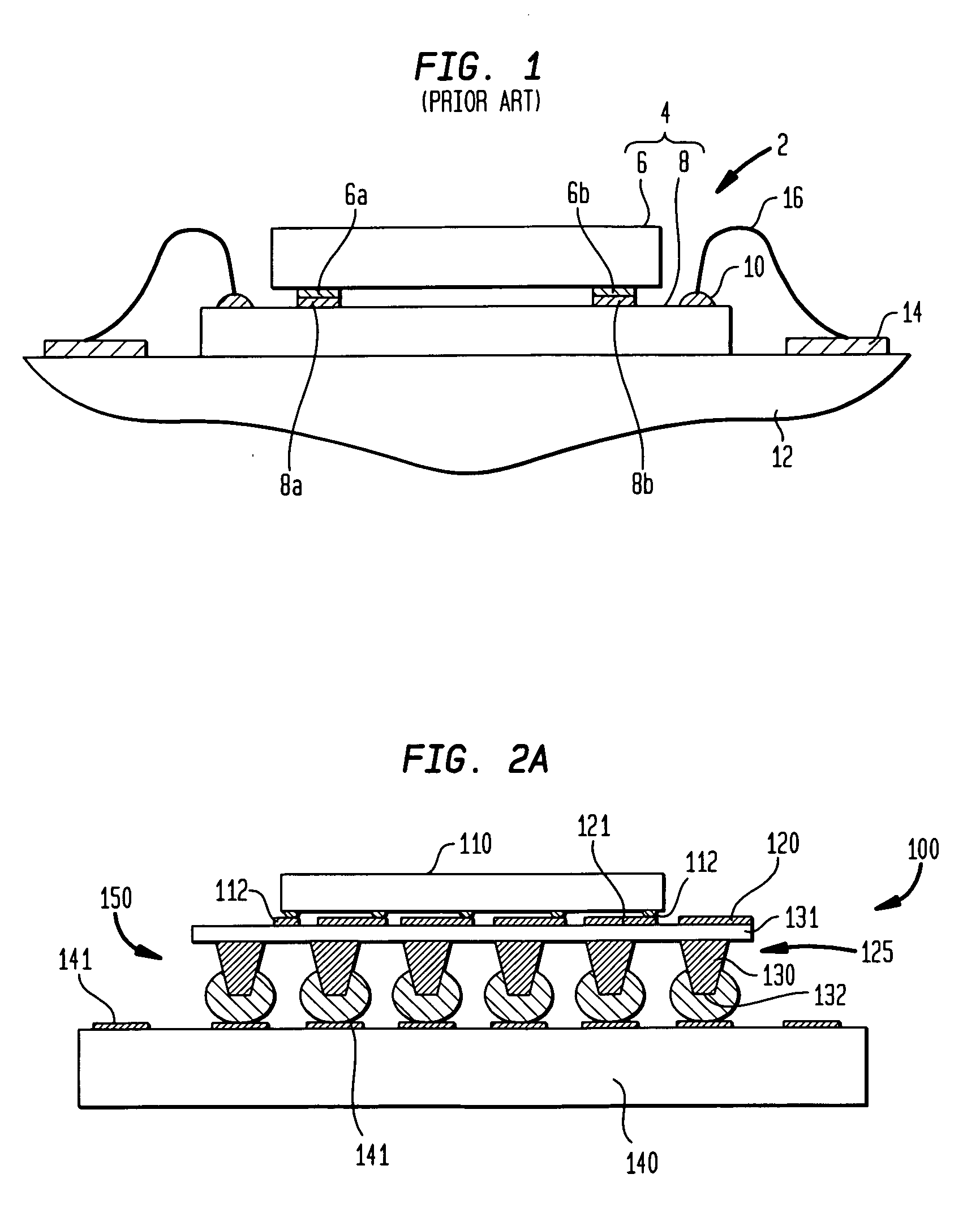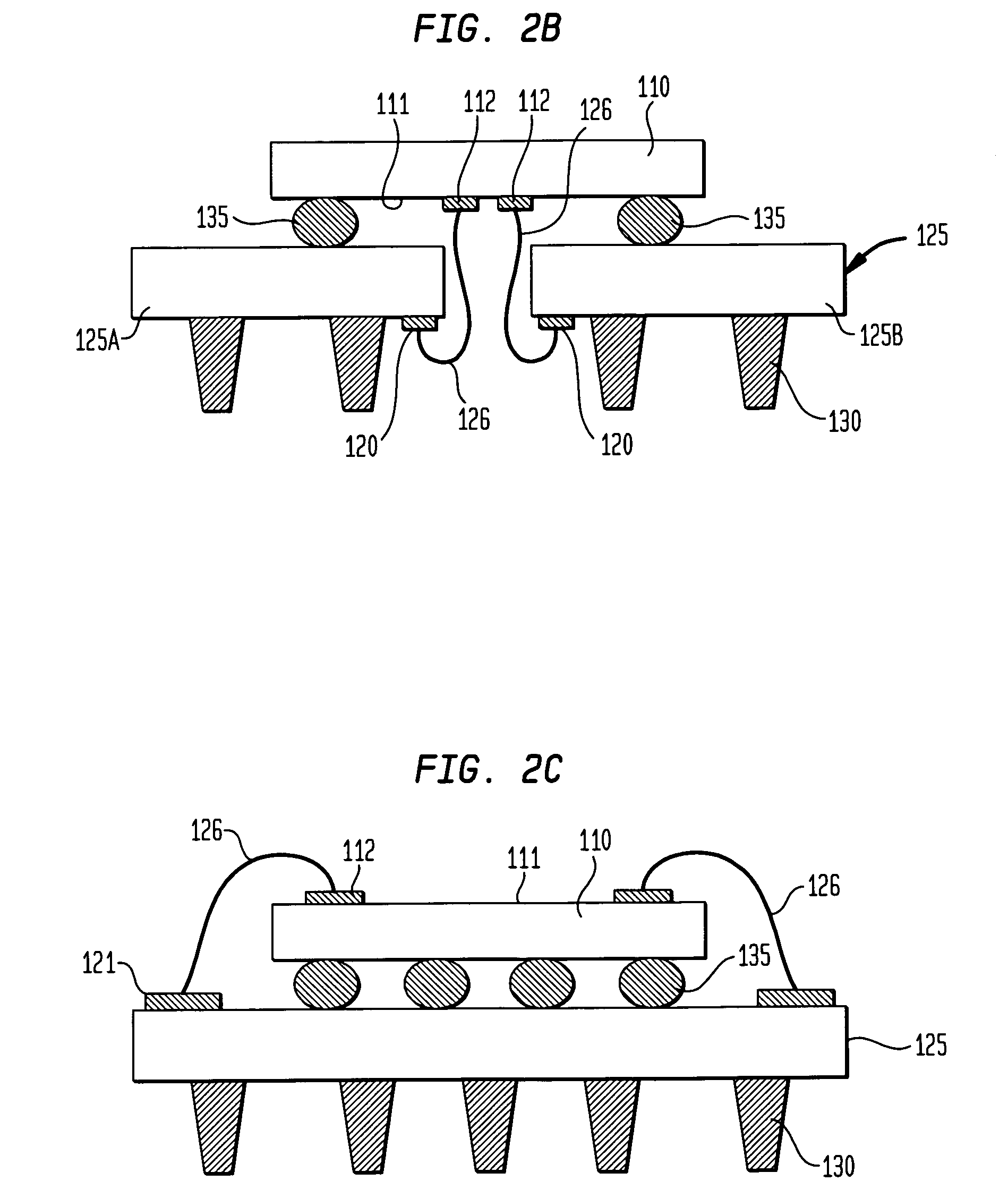Microelectronic package having stacked semiconductor devices and a process for its fabrication
a technology of semiconductor devices and microelectronic packages, applied in semiconductor devices, semiconductor/solid-state device details, electrical apparatus, etc., can solve problems such as topography on the surface, contact misalignment,
- Summary
- Abstract
- Description
- Claims
- Application Information
AI Technical Summary
Benefits of technology
Problems solved by technology
Method used
Image
Examples
Embodiment Construction
[0022] In one embodiment of the present invention a first microelectronic element is attached and electrically interconnected to a second microelectronic element. The microelectronic elements can be the same size or a different size. In the described embodiment the first microelectronic element has a smaller footprint (i.e. area) than the second microelectronic element. In one embodiment, the first microelectronic element is an assembly of a first integrated circuit device (i.e. chip) and an interposer element. This embodiment is described with reference to FIG. 2. A cross section of the packaged device 100 has a first smaller chip 110 attached to an interposer element 125. The interposer element 125 has a substrate 120 that is made of a dielectric material that, preferably, has a low modulus of elasticity, e.g., about 5 GPa or less and a large elastic range. For purposes of the present invention, a large elastic range is where the strain to failure induced by deformation (i.e. stre...
PUM
 Login to View More
Login to View More Abstract
Description
Claims
Application Information
 Login to View More
Login to View More - Generate Ideas
- Intellectual Property
- Life Sciences
- Materials
- Tech Scout
- Unparalleled Data Quality
- Higher Quality Content
- 60% Fewer Hallucinations
Browse by: Latest US Patents, China's latest patents, Technical Efficacy Thesaurus, Application Domain, Technology Topic, Popular Technical Reports.
© 2025 PatSnap. All rights reserved.Legal|Privacy policy|Modern Slavery Act Transparency Statement|Sitemap|About US| Contact US: help@patsnap.com



